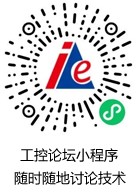安全仪表系统的十个事实之五(中英文对照) 点击:353 | 回复:1
TRUTH # 5
Your SIS should protect your plant for its lifecycle.
PRODUCTION ASSETS are built to last, and even when the investment is planned for a 20-year lifetime, additional investments frequently extend their life beyond the original design specification. Few Safety Instrumented Systems can extend their lifecycle and enhance their capabilities over the complete lifetime of the production asset.
A Safety Instrumented system should quietly provide year after year of safe and extremely reliable performance in mission critical applications. Its performance should be consistent and the user should not have to think about them very often.
Many years can pass between single component failures. However, as time passes, control technology advances, causing both vendors and customers to deal with component obsolescence.
Your SIS provider should continually invest in sustaining engineering to ensure continuity of the products you rely on. While you may not have experienced component failures in your system, you probably consider partnering with your vendor in battling obsolescence and advancing the technology of your safety or critical control system beyond its lifecycle and more in line of the lifecycle of the processes they protect.
Your SIS provider must understand the importance of planning the upgrade process to ensure maximum effectiveness at minimum cost while meeting best practices in safety and following the standard’s safety lifecycle, reducing downtime, avoiding complications, and disruption in the plant.
A well-planned upgrade can be performed in a few hours. can save up to 80% when compared to a full system replacement. Upgrades also drive support and training costs down by reducing re-training costs and spare inventory requirements for multiple system versions.
If you have existing SIS systems, it is far more cost effective to choose an upgrade path that utilizes most of your existing components. You should grade vendors higher who provide upgrade paths in which your existing chassis, power supplies, terminations, field wiring and cabinetry remain in place.
安全仪表系统应稳定地提供数年的安全以及在关键任务的应用中的极端可靠的性能。它的性能应是稳定的,用户不需要经常考虑它们。
单个组件故障仍能运行数年。然而,随着时间的流逝,控制技术进步,促使供应商和客户处理组件老化。
你的SIS供应商应在保持工程确保你依赖的产品的持续性上持续投资。当你没有经历你的系统中的组件故障时,你可以考虑与你的供应商在以下方面合作:防止老化;提高安全或关键控制系统延长其生命周期的技术;提高与它们保护过程的生命周期的协调。
你的SIS供应商必须理解规划升级过程的重要性从而确保以最小的成本实现最大的效果,而且满足在安全方面的最好应用,并遵循标准安全生命周期,降低停机时间,避免复杂化以及工厂运行中断。
当与完全更换系统相比较时,在短时间内完成规划好的升级能节省高达80%。通过降低重新培训的成本和节省多种系统版本的库存要求,升级也促使支持和培训成本降低。
如果你有现有的SIS系统,选择利用大多数你现有组件的升级路径的性价比更高。你应把你现有机架、电源、接线端子、现场布线和机柜仍保留在原位提供升级路径的供应商的积分评估的更高。
- 伺服电机的位置控制,转矩控制...
 [9344]
[9344] - 大家请把经常上的国外网站贴...
 [1803]
[1803] - 编码器的作用?减速机和变频器...
 [5795]
[5795] - ACB、MCB和MCCB具体有什么区别...
 [2823]
[2823] - wincc7.0sp3演示模式可以用于...
 [7117]
[7117] - 国际电气符号
 [4818]
[4818] - 电气常用专业单词(1048个)
 [2443]
[2443] - 日光灯关掉后,灯管两端仍然有...
 [2286]
[2286] - ABB机器人中文培训资料pdf
 [2993]
[2993] - 软启动的“斜坡电压”的物理本...
 [11188]
[11188]

官方公众号

智造工程师
-

 客服
客服

-

 小程序
小程序

-

 公众号
公众号

















 工控网智造工程师好文精选
工控网智造工程师好文精选
